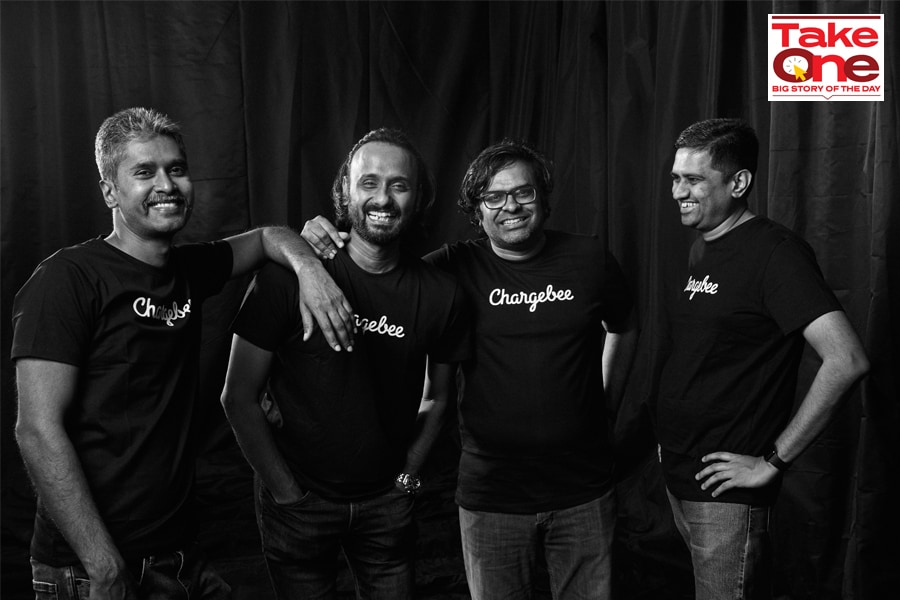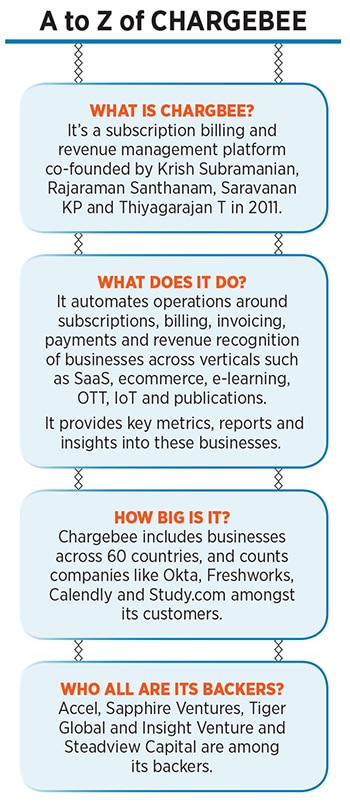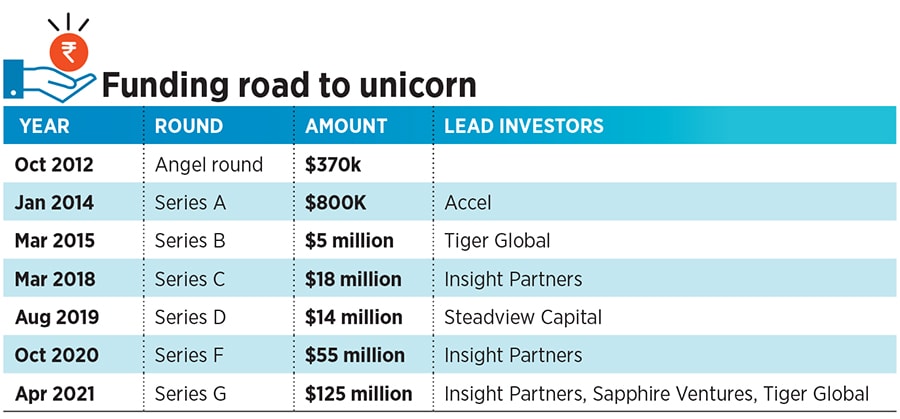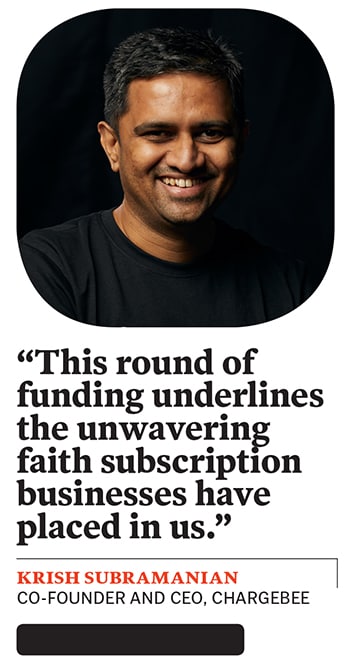
How Chargebee became a unicorn in the subscription billing business
For a startup that spent its first four years figuring out a growth path, it took clarity, customer focus, and a leap of faith to make it big in the global market
 From L-R: Saravanan KP, co-founder and CTO
; Rajaraman Santhanam, co-founder and COO; Thiyagarajan T, co-founder and architect; Krish Subramanian, co-founder and CEO
From L-R: Saravanan KP, co-founder and CTO
; Rajaraman Santhanam, co-founder and COO; Thiyagarajan T, co-founder and architect; Krish Subramanian, co-founder and CEO
The breakfast meeting started at 8:30 am sharp. The venue—a vegetarian restaurant in Chennai—was recommended by Krish Subramanian, one of the co-founders of fledgling startup Chargebee, a subscription billing and revenue management platform that was just over a year into operations toward the end of 2012.
The guest, Shekhar Kirani, didn’t question the choice. The stirring aroma of South Indian filter coffee was perhaps the best stimulant for the partner at marquee venture capital firm Accel to know more about the passionate founding team at Chargebee, which was introduced to the venture capitalist by Girish Mathrubootham of Freshworks (then known as Freshdesk). “He was getting to know us,” recalls Subramanian, who had no intention of raising money. The venture then was bootstrapped.
Kirani, for his part, also didn’t intend to invest. Subramanian and the team was just starting out, had a few Indian and global customers, and the rookie founders were early in their game. “I was trying to figure out how big this startup can become,” he says. The first meeting triggered a series of interactions over the next nine months. “This might seem a lot of time to make a decision to invest,” says Kirani. “But it wasn’t about a decision to invest at all.”

The guest and the host were investing time as meetings morphed into question and answer sessions. Kirani consistently probed the team with three questions: Why, who and what. Who is the customer? Why can't somebody build it themselves? What is the unique value that Chargebee brings to subscription businesses? The VC framed his questions on the basis of rich experience, and real-life examples. Freshworks then had six engineers, and one of them was building exclusively what Chargebee would offer to customers. Questions like ‘why would people pay, and stay,’ and ‘why won’t they set it up one time, and leave’ was something that needed a convincing answer.












